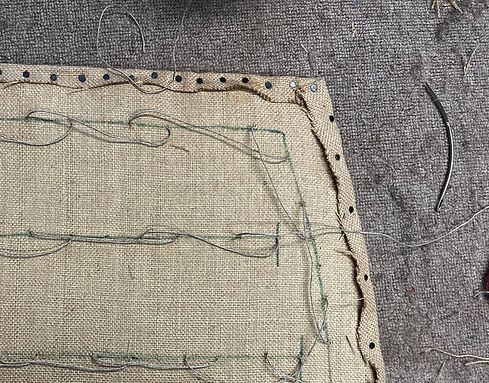Modern vs Traditional
Understanding the difference between modern and traditional upholstery techniques can help you decide how your piece should be restored. Each method has its own qualities, reflecting the era and craftsmanship of the time. Here, I’ll guide you through what sets these two approaches apart, and why each has its own benefits.
Modern Upholstery
Modern upholstery refers to furniture designed and produced after the 1950s, typically using webbing for support and filled with foam for comfort. The use of foam, alongside staples and other contemporary materials, has transformed the way furniture is made and reupholstered today. The process is more efficient and budget-friendly, while still providing a stylish, comfortable result.
Even though modern furniture may be newer, it can still carry significant sentimental value. I can rebuild from the frame up, reusing any webbing and foam if it’s still in good condition, or replacing these where needed.
Reupholstering or re-covering modern furniture gives you a way to update and personalise your piece while also being more sustainable than purchasing new.


Traditional Upholstery
Traditional upholstery is a skilled art that relies on natural materials like horse hair and coir for the filling. Every part of the process from installing webbing, tying in the springs, creating rolled edges and carefully teasing fibres is all done by hand. Furniture crafted before the 1950s was built to last. Often, these pieces feature solid, well-constructed frames that can be brought back to life through reupholstery, making them more durable than modern alternatives.
In comparison to a foam-filled chair, one crafted using traditional methods will feel significantly firmer and more supportive. Traditional upholstery relies on natural materials layered carefully to create a dense, structured seat that retains its shape over time, enhancing the piece's durability and longevity.
Traditional upholstery is an art form that takes time and patience, but the result is a timeless, resilient piece that honours its original craftsmanship.